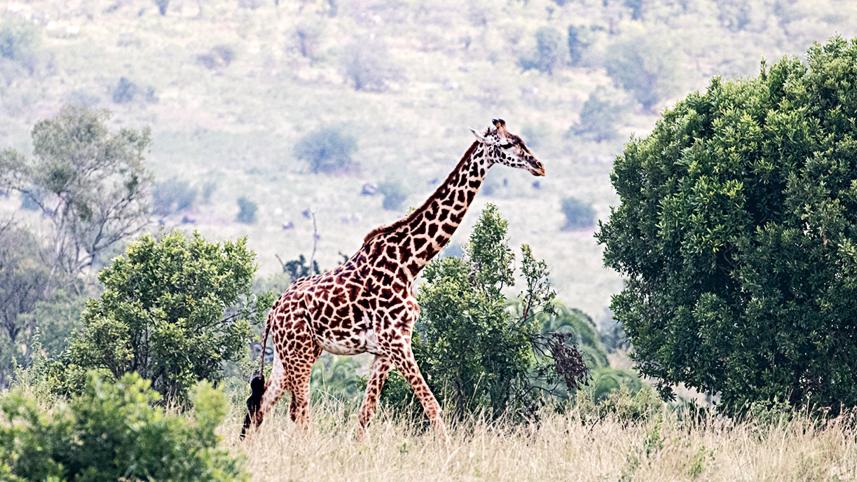Giraffe

Most people remember the movie Out of Africa for dazzling performances by Meryl Streep and Robert Redford. It is based on the book by Karen Blixen - writing as Isak Dinesen - a Danish woman who married a relative and moved to Kenya during 1913-1931 to build a coffee plantation which, along with her marriage, eventually failed. As her husband turns disloyal, the movie dwells on the romance between Blixen (played by Streep) and the Englishman Denys Finch Hatton (played by Redford.) But when I read the book last year, I was struck by how much Blixen devoted to the environment, to her relationship with African neighbours and employees, and to the land she worked. Perhaps the movie paid attention to this aspect of the book, but the Streep-Redford chemistry overpowered all else.
For me, a memorable moment of the book takes place when Blixen runs into a "big dead Giraffe bull" which had been shot by persons unknown near her farm. It causes her legal trouble because the killing of Giraffes was strictly prohibited in Kenya. This surprised me: a century ago, conservation was largely ignored and hunters such as Teddy Roosevelt were celebrated for their African trophies.
When I finally got to see the Giraffe in its home turf in Kenya's Maasai Mara last year I immediately understood why hunting it had been outlawed so long ago. It is a beautiful creature which moves gracefully as it reaches branches of Thorn and Acacia trees high up to eat leaves. Its long neck and beautiful body patterns add to its allure. When reaching down to drink water, it spreads its front legs so its head can reach ground level. Though it is improbably large, the creature never once looks out of place in the sprawling African savannah.
Being the tallest mammal on the planet makes the Giraffe's life interesting. The baby arrives into the world by dropping five feet to the ground as its mother gives birth. It stands up within thirty minutes and can run ten hours after birth. The adult Giraffe is no slouch when it comes to running, attaining speeds of 35 miles per hour on its long legs. Its heart has to be large – weighing 25 pounds - in order to pump blood all the way to the brain.
Reaching heights of 18 feet and weighing between 2000-3000 pounds, the Giraffe eats a lot. With a 21-inch long tongue capable of grasping, it cleans out the leaves of taller branches, chewing them like a cow. The trees are often thorny, so the tongue and the inside of the Giraffe's mouth are covered with tough tissue for protection. This herbivore eats 65 pounds of leaves and grass daily. On the average it lives for 25 years.
For a long time scientists believed there was only one species of Giraffe with nine subspecies (races.) However, recent DNA testing indicates that Giraffes fall into four species with five subspecies. Although their numbers are declining, they are considered "Vulnerable" by the IUCN, not "Endangered."
The extraordinary sight of Giraffes moving about gently in the open meadows of Maasai Mara will remain with me for a long time.
facebook.com/ikabirphotographs or follow ihtishamkabir on Instagram.



 For all latest news, follow The Daily Star's Google News channel.
For all latest news, follow The Daily Star's Google News channel.
Comments